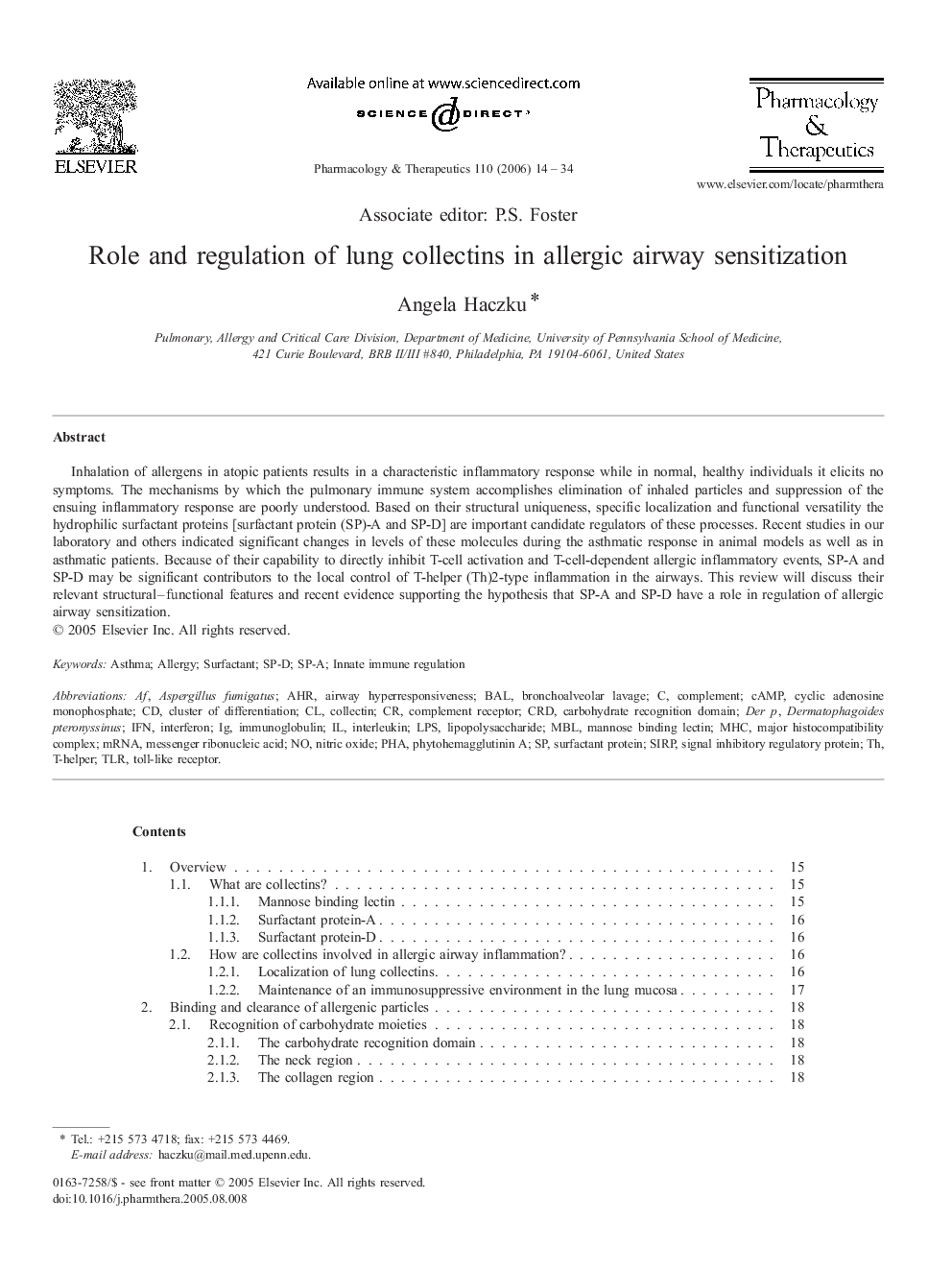| Article ID | Journal | Published Year | Pages | File Type |
|---|---|---|---|---|
| 2564340 | Pharmacology & Therapeutics | 2006 | 21 Pages |
Inhalation of allergens in atopic patients results in a characteristic inflammatory response while in normal, healthy individuals it elicits no symptoms. The mechanisms by which the pulmonary immune system accomplishes elimination of inhaled particles and suppression of the ensuing inflammatory response are poorly understood. Based on their structural uniqueness, specific localization and functional versatility the hydrophilic surfactant proteins [surfactant protein (SP)-A and SP-D] are important candidate regulators of these processes. Recent studies in our laboratory and others indicated significant changes in levels of these molecules during the asthmatic response in animal models as well as in asthmatic patients. Because of their capability to directly inhibit T-cell activation and T-cell-dependent allergic inflammatory events, SP-A and SP-D may be significant contributors to the local control of T-helper (Th)2-type inflammation in the airways. This review will discuss their relevant structural–functional features and recent evidence supporting the hypothesis that SP-A and SP-D have a role in regulation of allergic airway sensitization.
